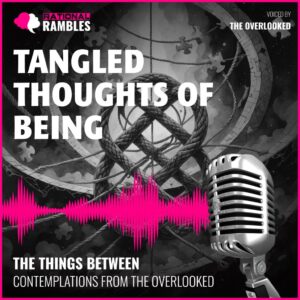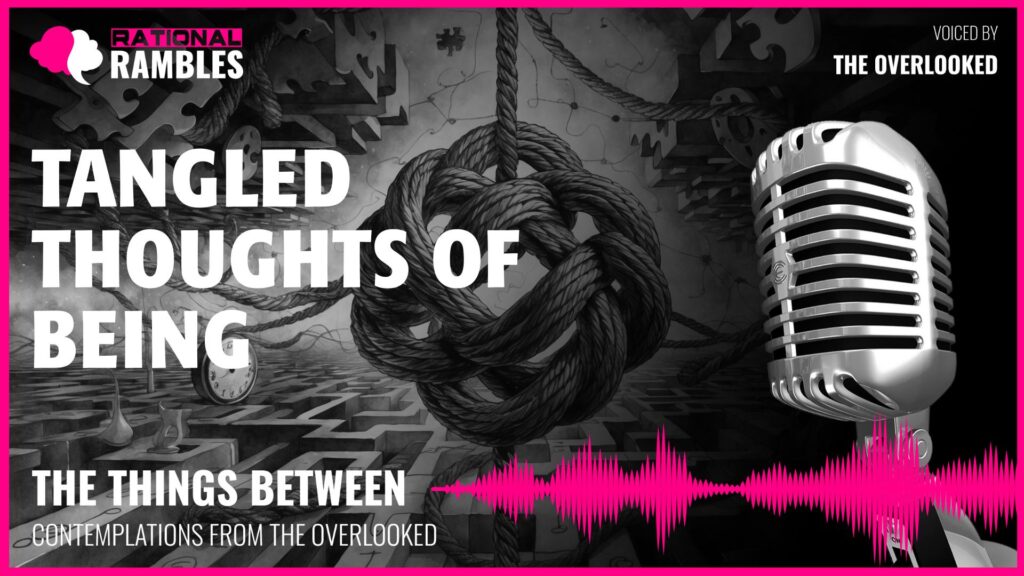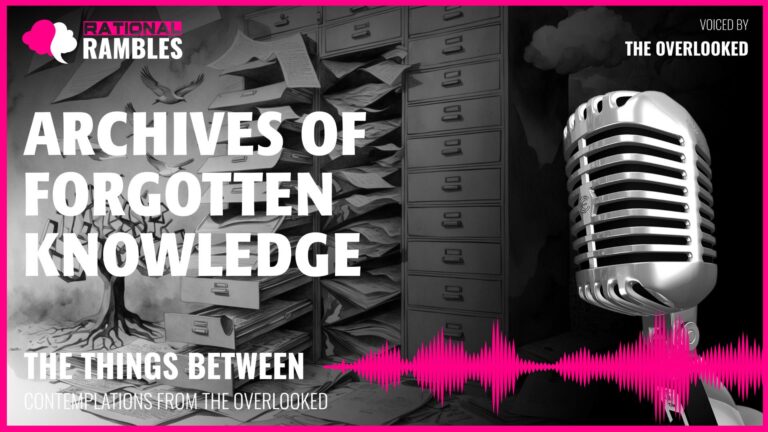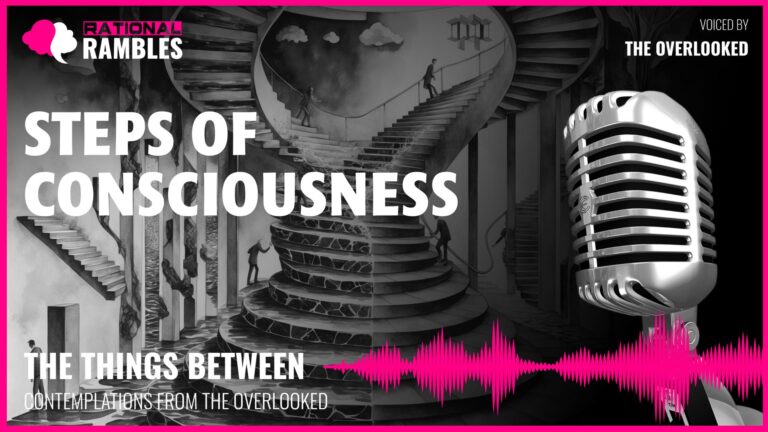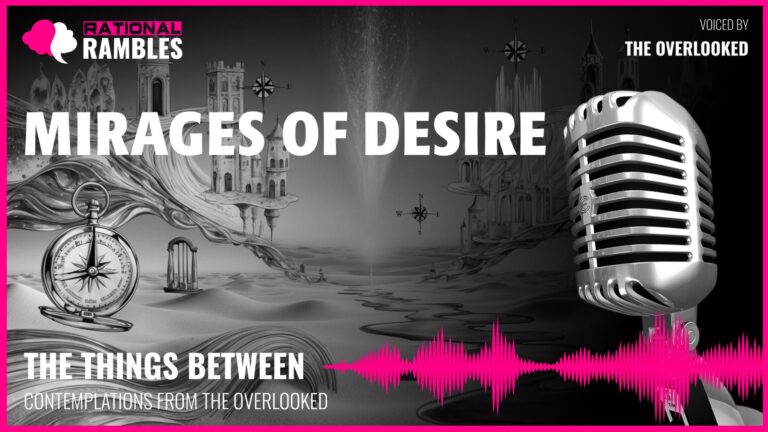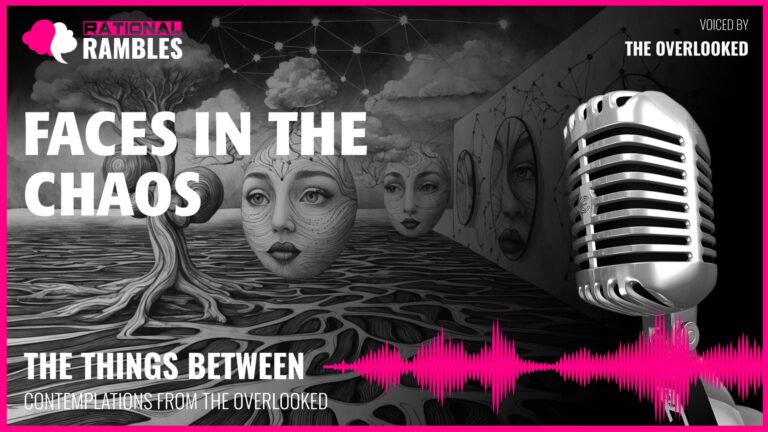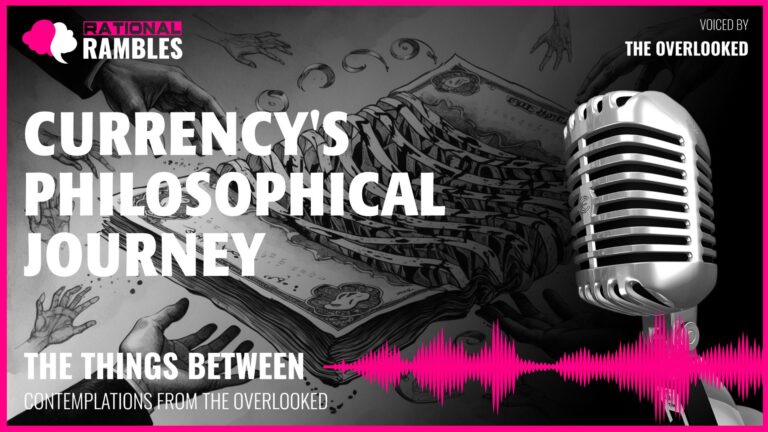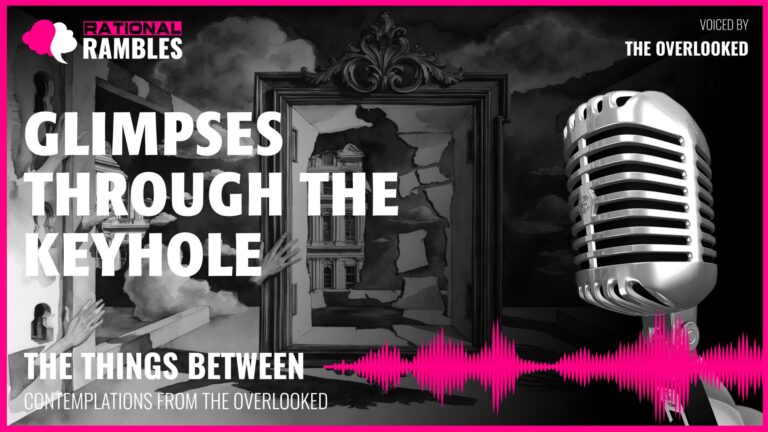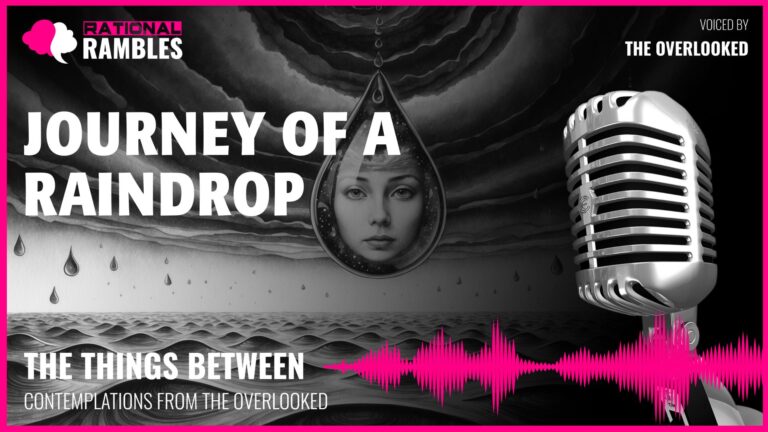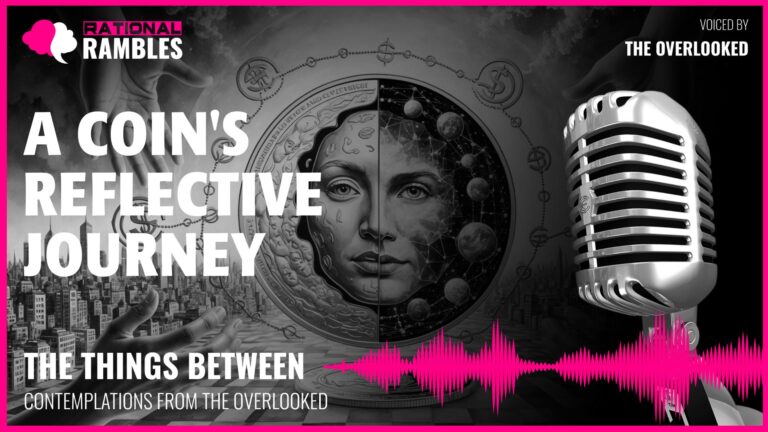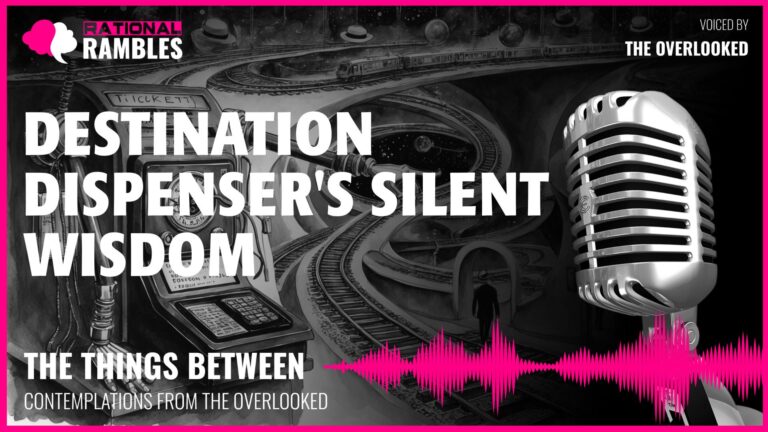The Paradox of Complexity: Entanglement as a Condition of Existence
Introduction
In our quest to understand the human condition, we often gravitate toward metaphors of entanglement. We speak of being “tied in knots” with anxiety, of relationships becoming “tangled,” of problems that seem “knotty” and resistant to simple solutions. This persistent metaphorical framework suggests something profound about the nature of existence itself—that complexity, connection, and constraint are not merely occasional conditions but fundamental aspects of being. This article explores the philosophical implications of entanglement as both a physical reality and a conceptual model for understanding the human experience.
Complexity presents a fascinating paradox. We simultaneously seek to create it and to escape it. We admire intricate patterns and elaborate systems while yearning for simplicity and straightforward solutions. This tension reflects a deeper philosophical question: Is complexity an obstacle to overcome or a necessary condition for meaning? Perhaps most intriguingly, complexity often serves as both connection and constraint—joining elements together precisely by limiting their movement and creating interdependence.
Throughout this exploration, we will consider how entanglement manifests across multiple dimensions of existence—from the physical constraints of three-dimensional space to the psychological complexity of human relationships, from the mathematical study of knot theory to the metaphysical questions of identity and purpose. By examining these varied manifestations, we may discover that complexity is not merely a state to be managed but a fundamental property that enables meaning, connection, and purpose in our lives.
The Ontology of Complexity
What does it mean for something to exist as complex rather than simple? At first glance, we might define complexity merely as the absence of simplicity—a deviation from straightforwardness, a complication of what could otherwise be linear. Yet this negative definition fails to capture the generative nature of complexity, the way it creates possibilities that simplicity cannot afford.
Complexity as Emergent Identity
When elements intertwine and interact, they create systems with properties that none of the constituent parts possess on their own. This emergence of new properties through complexity is evident across natural and human systems. Consider how individual neurons, relatively simple in isolation, create through their complex interconnections the emergent phenomenon of consciousness. Similarly, individual musical notes, when arranged in complex patterns, produce harmony, melody, and emotional resonance that no single note could generate.
In this sense, complexity is not merely a state of being but a process of becoming. The complex entity exists as something more than the sum of its parts—it possesses an emergent identity that derives from but transcends its components. This ontological transformation through complexity raises profound questions about identity. If an entity’s identity emerges from the specific pattern of its complexity, what happens when that pattern changes? Does it become a different entity entirely, or is there some continuous essence that persists through transformation?
The Spatial Paradox of Complexity
Complexity creates a curious spatial paradox. When an element becomes complex—when a line folds back upon itself in multiple dimensions, for instance—it simultaneously expands and contracts in space. It occupies more space in some dimensions while requiring less in others. A straight rope stretched to its full length occupies maximum linear space but minimal breadth. The same rope, when coiled or knotted, occupies less linear distance but more volumetric space.
This spatial transformation serves as a powerful metaphor for how complexity functions in conceptual space as well. A complex idea occupies more conceptual territory than a simple one, exploring connections and implications across multiple dimensions of thought. Yet it also achieves a certain economy by condensing multiple concepts into a coherent system rather than leaving them dispersed and disconnected.
Philosopher Martin Heidegger touched on related concepts with his notion of “gathering” in “The Thing,” suggesting that objects don’t merely occupy space but gather the world around themselves through their connections and implications. The complex entity, through its very intricacy, gathers more of the world into its presence than does the simple entity.
Complexity and Dimensionality
The possibility of complexity is intimately tied to the dimensions available for movement and interaction. In a one-dimensional world, complexity of the sort we’re discussing would be impossible—a line cannot cross itself without access to a second dimension. In three dimensions, certain forms of entanglement become possible that create stable, persistent complexity.
Intriguingly, mathematical explorations of knot theory reveal that in a four-dimensional space, any three-dimensional knot could be untied without cutting, simply by moving portions through the fourth dimension. This dimensionality constraint on complexity suggests something profound about the nature of problems and solutions—that what appears to be an intrinsic, unsolvable complexity may actually be a limitation imposed by the dimensional framework in which we operate.
This insight has implications beyond the purely physical. Many apparently intractable human problems may persist not because they are inherently unsolvable, but because we are constrained to approach them within limited conceptual dimensions. Expanding our dimensional thinking—considering new perspectives, frameworks, or paradigms—might reveal solutions that were invisible within our previous constraints.
The Teleology of Entanglement
What is the purpose of complexity? Is it merely an accidental state that arises through random interactions, or does it serve essential functions that simplicity cannot fulfill? Examining the purposes served by entanglement in both physical and conceptual realms reveals that complexity often emerges precisely because it enables capabilities that would otherwise be impossible.
Complexity as Connection
Perhaps the most fundamental purpose of complexity is to create connection. Simple, linear systems can connect points in direct, straightforward ways. But complex, entangled systems create multiple points of contact, establishing relationships that would be impossible in a linear arrangement.
Consider how this manifests in human relationships. The simplest relationship might be a single-purpose transaction—one individual providing something directly to another. But meaningful human connections become complex precisely because they serve multiple purposes simultaneously, creating numerous points of contact across emotional, intellectual, practical, and spiritual dimensions. The complexity of these relationships isn’t an obstacle to be overcome but the very substance of their meaning.
Philosopher Martin Buber’s distinction between “I-It” and “I-Thou” relationships reflects this understanding. The transactional “I-It” relationship maintains simplicity by treating the other as an object with a defined purpose. The meaningful “I-Thou” relationship embraces complexity by engaging with the other as a subject whose full being transcends any single dimension of interaction.
Complexity as Security
Another teleological aspect of complexity is its capacity to create security through constraint. A complex system often exhibits greater stability precisely because its elements are constrained by multiple connections, preventing simple disruption or disassembly.
This security function of complexity appears across domains. In physical systems, entangled elements resist separation because multiple points of connection must be addressed simultaneously. In social systems, communities with complex interconnections demonstrate greater resilience against external pressures. In information systems, complex encryption protects data precisely because it cannot be easily unraveled without the proper key.
Yet this security comes at a cost—the same complexity that provides stability also resists intentional change. Systems that become too complex may preserve themselves beyond their usefulness, resistant to evolution precisely because of the multiple dependencies that would need to be reorganized for change to occur.
Complexity as Memory
Entangled systems often serve as repositories of memory, preserving information through their specific configurations. The particular pattern of complexity becomes a record of its own creation and history, encoding information that would be lost in a return to simplicity.
Ancient cultures recognized this mnemonic capacity of complexity. Khipu, the knotted cord system used by the Inca civilization, encoded numerical data and possibly narrative information through specific patterns of knots. On a more mundane level, the practice of “tying a knot in one’s handkerchief” as a memory aid reflects an intuitive understanding that complexity can serve as an intentional disruption that preserves information.
In cognitive science, this principle appears in the structure of neural networks, where memories are encoded not in individual neurons but in the complex pattern of connections between them. The specific configuration of these connections preserves information that would be lost if the system were simplified.
French philosopher Henri Bergson captured a related concept with his notion of “duration,” suggesting that the present always contains the accumulated past within it. Complex systems manifest this principle physically, their current configuration embodying the history of forces and interactions that created them.
The Phenomenology of Entanglement
How do we experience complexity from within? What is the subjective experience of being entangled, of navigating complexity either as its creator or as one attempting to understand it? The phenomenology of entanglement reveals important insights about our relationship to complexity and its role in our lives.
The Tension of Constraint
A defining phenomenological aspect of entanglement is tension—the experience of being simultaneously connected and constrained. This tension manifests physically in actual entangled systems, where elements pull against each other, creating a balance of forces that defines the system’s structure. It appears metaphorically in our experience of complex situations, where competing demands, obligations, or desires create a sense of internal strain.
Existentialist philosophers like Jean-Paul Sartre and Simone de Beauvoir emphasized a similar tension in human existence—the simultaneous experience of freedom and constraint. We are free to make choices yet constrained by our circumstances, our past choices, and our connections to others. This tension isn’t an accidental feature of existence but its essential character.
The phenomenology of tension reveals something important about our relationship to complexity. We often experience complex entanglements as problematic precisely because of the constraints they impose on our movement and choice. Yet these same constraints create the connections that give our lives meaning and purpose. Complete freedom from constraint would mean complete disconnection—a simplicity that would leave us isolated and adrift.
Patient Understanding vs. Forceful Dissolution
When confronted with complexity, we can adopt fundamentally different phenomenological stances. One approach is patient understanding—following each turn and connection, seeking to comprehend the pattern in its entirety. Another is forceful dissolution—cutting through complexity to impose simplicity by eliminating connections.
These contrasting approaches reflect different values and different understandings of complexity itself. Patient understanding values the complexity as potentially meaningful, as containing information worth preserving. Forceful dissolution treats complexity as merely problematic, as an obstacle to be overcome by any means necessary.
Our choice between these approaches often depends on whether we perceive the complexity as intentional or accidental, as our own creation or as imposed upon us from outside. We tend to approach complexity we’ve intentionally created with patience, seeking to preserve its meaning. Complexity we encounter by accident or perceive as imposed upon us often meets with impatience and the desire for quick resolution, even at the cost of destruction.
Philosopher Maurice Merleau-Ponty’s concept of “maximum grip” offers insight here. He suggested that perception involves seeking the optimal position from which to grasp an object or situation—neither too close (losing context) nor too far (losing detail). Similarly, approaching complexity requires finding the right perspective: close enough to trace its specific connections, distant enough to perceive its overall pattern.
The Aesthetic Experience of Complexity
Beyond the practical challenges it presents, complexity offers an aesthetic dimension—a beauty that emerges precisely from the intricate relationship between order and chaos, pattern and variation. This aesthetic appreciation of complexity appears across cultures in art forms like Celtic knotwork, Islamic geometric patterns, and Japanese Shibari.
What makes complexity beautiful? Philosopher Immanuel Kant distinguished between “free beauty” (appreciated without concept) and “dependent beauty” (appreciated in relation to purpose). Complex patterns often exhibit both: they can be appreciated for their pure visual or conceptual intricacy and for how effectively they serve their purpose.
The aesthetic experience of complexity often involves a particular type of cognitive engagement—a movement between perceiving individual elements and recognizing overall patterns, between analytical understanding and holistic appreciation. This oscillation creates a dynamic engagement that simple patterns cannot provide, challenging the mind while also satisfying its desire for order.
The Epistemology of Complexity
How do we know and understand complex systems? What are the limitations and possibilities of human cognition when confronted with intricate, entangled phenomena? The epistemology of complexity addresses these questions, examining how we develop knowledge about complex systems and the particular challenges they present to understanding.
Visible Yet Opaque
Complex systems present a paradoxical epistemic condition—they can be simultaneously completely visible yet deeply opaque. Unlike hidden or concealed phenomena, the entire structure of a complex system may be openly accessible to perception. Yet this visibility doesn’t guarantee comprehension. One can see every individual connection in a complex network without understanding how the system functions as a whole.
This paradox challenges simplistic models of knowledge that equate seeing with understanding. It suggests that comprehension requires more than perception—it demands the ability to trace relationships, to follow patterns, to grasp how individual connections contribute to systemic properties.
The philosopher Timothy Morton’s concept of “hyperobjects”—entities so massively distributed in time and space that they resist conventional modes of perception and comprehension—relates to this challenge. Complex systems, even when physically small, can be epistemologically “hyper” in the sense that they exceed our cognitive grasp, requiring special approaches to understanding.
Emergence and Reduction
The epistemology of complexity involves a tension between emergent and reductive understanding. Reductive approaches seek to understand complex systems by analyzing their components and the rules governing their interactions. Emergent approaches focus on the system-level properties that arise from but cannot be predicted solely from knowledge of the components.
This tension appears in scientific debates about methodological reductionism. Can biology be fully explained by chemistry, chemistry by physics, and so on down to fundamental particles? Or do emergent properties at each level require their own epistemological frameworks? Philosopher Patricia Churchland has advocated for “intertheoretic reduction,” while others like Robert Laughlin argue for the epistemological irreducibility of emergent phenomena.
Understanding complex systems often requires navigating between these approaches—analyzing components and their interactions while also recognizing and theorizing emergent properties. Neither approach alone provides complete understanding.
The Mathematics of Complexity
Mathematical approaches to complexity offer powerful tools for understanding entangled systems. Knot theory, network theory, complexity theory, and chaos theory all provide frameworks for analyzing and representing complex phenomena that resist simpler mathematical descriptions.
These mathematical approaches reveal that complexity isn’t merely qualitative—it can be quantified, compared, and classified. Different types of complexity can be distinguished: algorithmic complexity measures the shortest possible description of a system, organizational complexity measures the number and intensity of connections, computational complexity measures the resources required to solve a problem.
Yet mathematics also reveals fundamental limits to our knowledge of complex systems. Kurt Gödel’s incompleteness theorems demonstrate that any complex formal system contains truths that cannot be proven within the system itself. This suggests an inherent limitation to self-understanding for any sufficiently complex system, including human cognition itself.
The Ethics of Entanglement
What ethical principles should guide our creation, navigation, and dissolution of complex systems? How do we determine when complexity should be preserved, when it should be untangled, and when it might need to be cut through? The ethics of entanglement addresses these questions, examining our moral relationship to complexity in its various forms.
Appropriate Complexity
Perhaps the most fundamental ethical principle governing our relationship to complexity is appropriateness—matching the level of complexity to the purpose at hand. Too little complexity may fail to serve essential functions or create necessary connections. Too much complexity may create unnecessary constraints, impede understanding, or resist beneficial change.
This principle of appropriate complexity appears in design ethics as “requisite complexity”—the idea that a system should be as complex as necessary but no more so. It manifests in communication ethics as clarity—using complexity when needed for accuracy or nuance, but favoring simplicity when it adequately conveys meaning.
Determining appropriate complexity requires considering both functionality and comprehensibility. A system must be complex enough to serve its purpose effectively but simple enough to be understood and maintained by those who interact with it. This balance differs across contexts, depending on the specific functions being served and the capabilities of those involved.
Responsibility for Created Complexity
We bear different ethical responsibilities toward complexity we intentionally create versus complexity that emerges accidentally or is imposed upon us. When we deliberately create complex systems—whether technological, organizational, or legal—we incur obligations to make that complexity navigable, to provide keys for its understanding, and to consider its potential consequences.
This ethical responsibility appears in debates about technological design, where critics like Jaron Lanier argue against “lock-in”—the tendency for technological systems to become so complex and interdependent that they cannot be meaningfully modified, trapping society in particular patterns regardless of their continued value.
It also appears in discussions of legal and regulatory systems, where unnecessarily complex rules can function as a form of exclusion, privileging those with specialized knowledge or resources to navigate complexity while disadvantaging others. Legal scholars like Cass Sunstein have advocated for “simplification” as an ethical imperative in governance.
The Ethics of Dissolution
When faced with problematic complexity, we must choose between patient untangling and forceful cutting. This choice carries ethical weight, as it determines whether connections are preserved or severed, whether information is maintained or lost.
The ethics of dissolution requires considering multiple factors: the value of what might be lost through cutting versus the cost of maintaining dysfunctional complexity; the distribution of burdens created by the complexity versus the distribution of benefits from its preservation; the consent of those affected by either maintaining or dissolving the complexity.
Philosopher Martha Nussbaum’s capabilities approach offers relevant insight here. If complexity enhances essential human capabilities by creating meaningful connections and enabling valuable functions, there is ethical reason to preserve it. If complexity constrains these capabilities without compensating benefits, there may be ethical justification for its dissolution.
Existential Implications of Complexity
What does complexity tell us about the nature of existence itself? How does the reality of entanglement shape our understanding of purpose, identity, and meaning? The existential dimension of complexity addresses these questions, examining how entanglement shapes our most fundamental understanding of being.
Complexity and Identity
Our identity as individuals is itself a complex entanglement—a specific pattern of connections across physical, psychological, social, and temporal dimensions. We are defined not by a simple essence but by the particular ways we are knotted into existence.
This view challenges essentialist notions of identity that posit a simple, stable core that persists unchanged through all experience. Instead, it suggests a view closer to what philosopher Paul Ricoeur called “narrative identity”—the idea that selfhood emerges through the complex integration of experiences into a coherent but evolving pattern.
If identity is indeed a form of complexity, this raises profound questions about continuity and change. How much can the pattern change before identity is lost? Is there some essential core to the pattern that must be preserved, or is identity entirely constituted by the specific configuration of connections, however much they might change over time?
The Paradox of Problem and Solution
Complexity embodies a profound existential paradox—it simultaneously constitutes problems and enables solutions. The same entanglement that creates constraints also creates connections; the same complexity that presents challenges also creates possibilities.
This paradoxical nature appears in how we approach the complexity of existence itself. Existentialist philosophers like Albert Camus described the “absurdity” of human existence—our desire for simple meaning in a complex universe that offers no such simplicity. For Camus, the heroic response isn’t to deny this complexity but to embrace it, to find meaning precisely in navigating the entanglement rather than escaping it.
Similarly, Buddhist philosophy addresses the entangled nature of existence through concepts like “dependent origination” (pratītyasamutpāda)—the understanding that all phenomena arise in complex interdependence rather than existing independently. The “problem” of suffering arises from this entanglement, yet the “solution” involves not escaping complexity but developing a wiser relationship to it through compassionate awareness.
Temporality and Complexity
Complexity has a temporal dimension that shapes our existential understanding. Complex systems evolve over time, accumulating history in their structure. A newly formed entanglement might be easily reversed, but as time passes and the system experiences forces and influences, its complexity evolves in ways that cannot be simply undone by reversing initial steps.
This temporal dimension of complexity mirrors our existential condition. Our lives accumulate complexity through experience; each choice, each relationship, each event becomes woven into the pattern of our existence. We cannot simply reverse time and undo these entanglements—we must incorporate them into our continuing narrative.
Philosopher Martin Heidegger’s concept of “thrownness” (Geworfenheit) captures this aspect of our existence. We find ourselves “thrown” into a specific historical, cultural, and personal context—an initial entanglement not of our choosing. Our existence involves navigating this given complexity while creating new patterns through our choices, always working with and through entanglement rather than from a position of abstract freedom.
Complexity in Contemporary Thought
How do current philosophical, scientific, and cultural discourses engage with the concept of complexity? This section examines how complexity figures in contemporary thought across multiple disciplines, revealing its centrality to our understanding of natural and human systems.
Complexity Science and Systems Thinking
The emergence of complexity science and systems thinking in the late 20th century marked a significant shift in how we approach complex phenomena. These approaches explicitly recognize that complex systems cannot be fully understood through reductive analysis alone—that emergent properties, non-linear interactions, and self-organizing dynamics require new methodological and conceptual tools.
Key figures in this movement include Ilya Prigogine, whose work on dissipative structures showed how order can emerge spontaneously in complex systems far from equilibrium; Stuart Kauffman, whose research explored self-organization in biological systems; and Donella Meadows, whose work applied systems thinking to environmental and social challenges.
These approaches have transformed fields from biology to economics, challenging mechanistic models with perspectives that embrace complexity, emergence, and interconnection. They’ve also provided conceptual tools for addressing “wicked problems”—complex social and environmental challenges that resist simple solutions precisely because of their entangled nature.
Complexity in Critical Theory
Contemporary critical theory engages extensively with complexity, particularly in its analysis of power, identity, and social systems. Intersectionality theory, pioneered by Kimberlé Crenshaw, explicitly addresses how multiple systems of oppression intertwine to create complex experiences that cannot be understood by analyzing each system in isolation.
Similarly, actor-network theory, developed by Bruno Latour and others, examines how human and non-human actors form complex networks that constitute social reality. This approach rejects simple causal explanations in favor of tracing the multiple connections and mediations that produce social phenomena.
Posthumanist theorists like Donna Haraway embrace complexity through concepts like “entanglement” and “sympoiesis” (making-with), challenging individualistic and anthropocentric frames by emphasizing the complex interdependence of all living beings and systems.
Complexity in Technological Discourse
As our technological systems grow increasingly complex, discourses around technology increasingly engage with questions of appropriate complexity, comprehensibility, and control. Critics like Jaron Lanier and Shoshana Zuboff warn against the dangers of incomprehensible complexity in technological systems, arguing that technologies whose operation exceeds human understanding create problematic power dynamics and undermine democratic values.
Conversely, proponents of certain complex technologies argue that this complexity enables capabilities that simpler systems cannot provide. The debate around artificial intelligence exemplifies this tension, with some arguing that AI systems must remain comprehensible to humans (even at the cost of capability) while others suggest that embracing the complexity of neural networks enables valuable emergent capabilities, even if we cannot fully explain their operation.
These technological debates reflect broader questions about our relationship to complexity: How much complexity can we responsibly create and maintain? When does complexity enhance human capability, and when does it undermine human agency and understanding?
Navigating Complexity in Personal Life
How can individuals develop healthier, more productive relationships with complexity in their personal lives? This section explores practical approaches to navigating entanglement, drawing on philosophical insights to inform everyday existence.
Discerning Necessary from Unnecessary Complexity
A crucial skill in navigating complexity is discernment—distinguishing between complexity that serves valuable purposes and complexity that merely complicates without compensating benefits. This discernment requires developing what philosopher Aristotle might have called practical wisdom (phronesis)—the ability to judge appropriately in particular situations.
Practicing such discernment involves asking: What connections does this complexity create, and are they valuable? What functions does it serve that simpler alternatives could not? What would be lost if it were simplified? What constraints does it impose, and are they justified by its benefits?
This discernment applies across domains of life—from technological choices to relationship patterns, from professional commitments to intellectual pursuits. It enables us to embrace complexity where it enriches our lives while seeking simplification where complexity merely constrains without corresponding value.
Patience with Necessary Complexity
When complexity serves valuable purposes or cannot be ethically dissolved, the challenge becomes developing patience with its navigation. This patience involves resisting the urge for quick resolution through force (cutting the knot) when understanding would better serve long-term values.
Practices from contemplative traditions offer resources for developing this patience. Mindfulness meditation, for instance, cultivates the capacity to stay present with complexity without immediately reacting to the discomfort it may cause. Philosophical practices like Socratic dialogue develop the patience to explore complex questions thoroughly rather than settling for premature closure.
This patience doesn’t mean passive acceptance of all complexity. Rather, it means taking the time to understand complex situations before acting, recognizing that hasty simplification often creates more problems than it solves.
Complexity and Well-being
The relationship between complexity and well-being is itself complex. Excessive or inappropriate complexity can create stress, overwhelm, and a sense of being constrained beyond our capacity to cope. Yet insufficient complexity can lead to boredom, disconnection, and a lack of meaning.
Psychologist Mihaly Csikszentmihalyi’s concept of “flow” offers insight here. Flow—an optimal state of engagement and satisfaction—occurs when we face challenges that match our capabilities. Too much complexity creates anxiety; too little creates boredom. Well-being emerges from engaging with appropriate complexity—complex enough to fully engage our capacities but not so complex as to overwhelm them.
This suggests that well-being doesn’t come from minimizing complexity but from developing the capacity to engage with it effectively. As our capabilities grow through learning and practice, we can navigate increasingly complex situations without becoming overwhelmed, expanding our zone of optimal engagement.
Conclusion: Embracing the Knotted Nature of Existence
Throughout this exploration, we’ve examined complexity from multiple angles—ontological, teleological, phenomenological, epistemological, ethical, and existential. Across these perspectives, certain insights emerge consistently: that complexity is not merely a problem to be solved but a condition that enables connection and meaning; that our relationship to complexity involves both constraint and possibility; that navigating complexity requires both patience and discernment.
Perhaps the most profound insight is that complexity is not accidental to existence but essential to it. In a universe of perfect simplicity—of straight lines never crossing, of elements never entangling—connection itself would be impossible. The very possibility of relationship, of meaning, of purpose depends on complexity, on the capacity for elements to loop back upon themselves, to create patterns of interaction that transcend linear progression.
This understanding invites us to reconsider our relationship to the complexity we encounter. Rather than seeing entanglement solely as a problem to be solved, we might recognize it as the very condition that makes meaningful existence possible. The knots in our lives—the complex relationships, the difficult questions, the intricate systems we navigate—are not obstacles to living but the substance of life itself.
This doesn’t mean we should embrace all complexity uncritically. Discernment remains essential—distinguishing between complexity that enriches and complexity that merely constrains, between knots that connect and knots that bind. But it does suggest that our aim should not be to eliminate complexity in favor of absolute simplicity, but to develop the capacity to navigate complexity with wisdom, patience, and appreciation for its generative potential.
In the end, to be is to be entangled—connected through complexity to the world around us, to others, to our own past and future selves. Our challenge is not to escape this entanglement but to engage with it consciously, to participate in its patterns with understanding and intention, to find within complexity not confusion but connection, not constraint but possibility.


